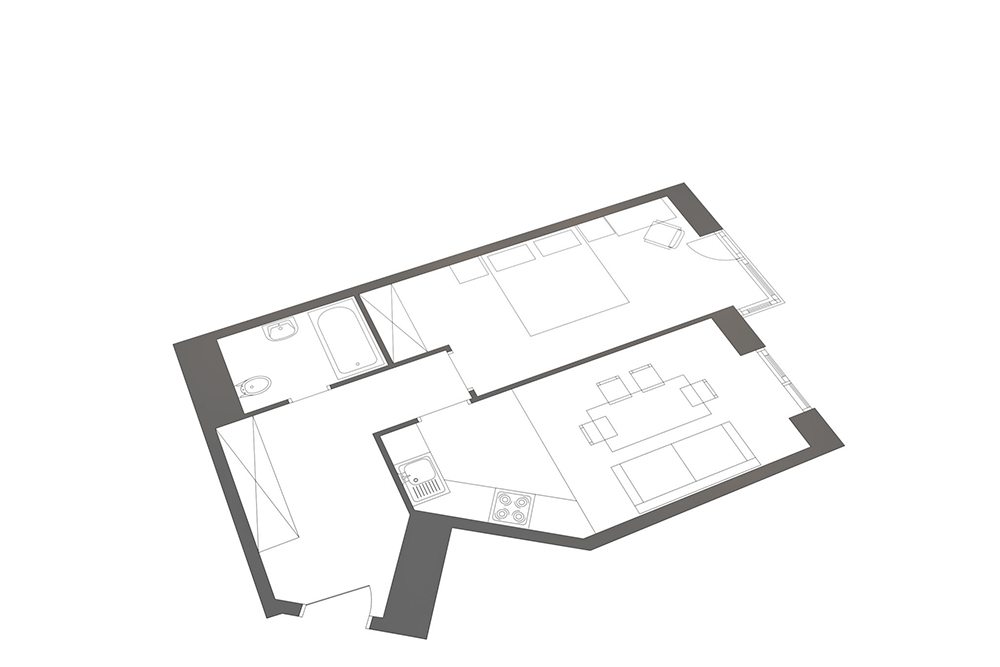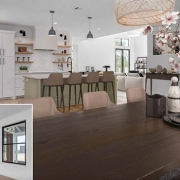
Experienced realtors know that posting listings with pictures of empty houses and a formal short description is not the most effective sales method. Faceless listings are boring, and once a prospect gets bored, you risk losing them to your competitors with more luring offers. So, if you want to get ahead of all other realtors, consider using a new strategy, i.e. real estate storytelling.
And although there are tons of articles about storytelling on the internet, very few realtors know how to build it. Most of them don’t even try it because they can’t see the advantages they can get from it.
As a virtual staging company with years of experience, we often provide clients with CG imagery for their storytelling. That’s why we know at least 7 ways it can make your real estate business bloom.
#1. Real Estate Storytelling Evokes Emotions
Surely, emotion is the best sales driver so realtors have to find a way to hook prospects emotionally into loving their potential new home. To achieve this, use touching storytelling and do thorough research on a property and area.
Build your storytelling on the history of particular real estate, describe to future homeowners their new neighborhood in a way that will make them feel like they’ve known it for years. Be lavish with sentimental touches, mention the best coffee shop on the block and the name of its owner. In other words, let prospects feel like they are at home already.
To enhance your real estate storytelling, use quality imagery like photos and videos of a house and neighborhood. Instead of posting empty pics of real estate, use the “before and after” edits of virtual staging or renovation. Naturally, seeing dramatic transformation always evokes awe. Or, provide prospects with a full virtual 360° tour so they can experience the immersive effect to the fullest.
#2. Effective Storytelling Resonates with Design Trends

Real estate storytelling has to be relevant and resonate with the needs of modern prospects. That’s why it is simply crucial for a realtor to take into account the latest trends and refer to them in both text descriptions and visuals.
For instance, due to the prolonged lockdown, home gyms and offices became a new hit of 2020 and they still are going strong. So, ask CG artists to virtually stage one room as a gym and use trendy furniture and decor for a home office so that it looks both presentable and comfortable.
#3. Storytelling Is An Excellent Informing Tool
Just put yourself in the prospect’s shoes — of course, you want to know every single detail about your new home and surroundings before buying it. As future residents of this area, people want to understand the infrastructure and know which shops, schools, and malls are nearby. Since it’s not less important than real estate itself, realtors should provide clients with information about all nuances of the neighborhood.
As for the property itself, consider investing in informative visual materials. Don’t post pictures of empty rooms to your listings — without furniture, they all look like white boxes. On the contrary, show the potential of real estate with virtual staging for a house. Also, use self-explanatory 3D plans instead of puzzling 2D drawings. This way it will be much easier for buyers to understand the layout and proportions of real estate.
#4. Real Estate Storytelling Beefs Up Realtor’s Reputation

Realtors who use storytelling also increase their reputation and improve their image. In the eyes of buyers, they are consistent and attentive professionals who know everything about the real estate they sell.
You can make your storytelling even more client-oriented and friendly by adding customer testimonials and stories of a purchase. To enhance the effect of the happy clients’ stories, use pics of the house before and after the sale, virtual tours, and interviews with homeowners. With such proof, your potential clients won’t doubt your professionalism as a real estate agent.
#5. Storytelling Provides a Seamless Selling Experience
The great advantage of real estate storytelling is that it creates a smooth information flow and provides prospects with a seamless home buying experience. It means that they don’t just bump into the same listing on the internet from time to time. Well-built storytelling gradually reveals all the details about the property, so potential buyers will find themselves following the story as it goes by.
To make them involved in your marketing tactic, keep filling your story with exciting descriptions and top-notch CGI solutions. Start with describing the neighborhood and post the exterior images of the house. Then, add a 3D plan and digital staging of each room. The next step, emphasize the versatility of the real estate with different layouts and interior styles for the same home. In short, keep winning your customer step-by-step.
#6. Real Estate Storytelling Targets a Particular Audience
Storytelling can be strategically targeted to a particular type of customer. For that, highlight the key points of the property both in the textual part of a listing and visual materials. For instance, to promote a forever family home, use family-focused interior images — a large kitchen, comfy dining area, one or two kids’ rooms, etc. Besides, ask CG artists to stage one of the premises as a home movie theater or a family room.
To target your real estate imagery, indicate your intended audience in the brief you send to a virtual staging studio. This way a CG team will be able to develop the perfect floor layout and pick certain furniture and decor items. Seeing real estate tailored to their needs, future buyers can easily imagine themselves living in this house before they even visit it.
#7. Storytelling with Quality CGI Content Is Highly-Convincing
Naturally, to convince clients that the property is worth the money, mere words are not enough. Real estate storytelling has to provide them with photorealistic and stylish images of both interiors and exteriors of the home.
So ordering CGI, a realtor can get a variety of static and motion solutions. First and foremost, they need virtual staging that fills empty houses with furniture and accessories. Another effective storytelling CG tool is digital restyling. It allows prospects to see several styling options for the interiors and find their favorite one.
Also, a real estate agent has to prove the convenience of a house layout. Thanks to a fully-furnished 3D floor plan, it is easier for buyers to evaluate the capacity of the home and its layout advantages. And last but not least, an interactive virtual tour is the best real estate exploration tool. Walking through the virtual rooms, prospects can experience presence in the house and examine it in detail.
Real estate storytelling is a long-term strategy that is based on a certain tone of voice, smart text descriptions, and CGI customized for a specific target audience. Well-done storytelling offers prospects an exciting story instead of a boring listing. It is evoking positive emotions and gradually introducing the property to the buyers.
Need awe-inspiring CGI for your real estate storytelling? Don’t hesitate and contact us for virtual staging services now. With our CG solutions, you will get top-quality visual content that will boost your sales!


















Leave a Reply
Want to join the discussion?Feel free to contribute!